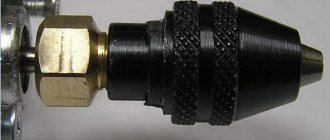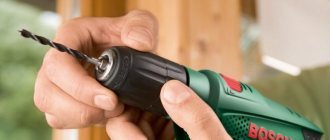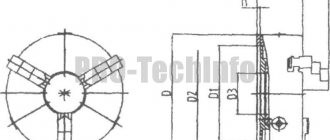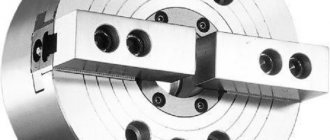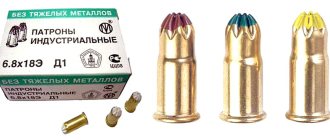Such a seemingly simple and uncomplicated procedure as connecting a light bulb socket has its own nuances that are not always familiar to people far from electricity.
What can I say, sometimes the electricians themselves do it wrong. What could this mean for you in future use?
For example, the fact that the next time you replace a burnt paw, you will simply get under voltage and get an electric shock. To avoid this, let's look at all the possible mistakes when doing this work.
Connecting old-style carbolite
Let's start with carbolite ones. This cartridge is collapsible and consists of three parts:
- cylindrical body with thread
- bottom
- ceramic insert with contacts
Most often in our apartments we use cartridges marked:
- E27
- E14
The value in numbers indicates the diameter of the lamp base in millimeters that is suitable for this socket.
The letter “E” indicates that it belongs to the screw series with Edison threads.
There are also pin type, G series and some others presented below.
Such products are designed for a current of no more than 4A. That is, in a 220V network you can connect a load of up to 900W to them.
Varieties according to the type of base.
The choice of base depends on the light bulbs used:
- For almost all housekeepers, fluorescent and conventional lamps, type E27 with a traditional threaded connection is used. The socket is suitable for household LED appliances and a range of halogen lamps.
- Small light bulbs can be used with E14 type sockets (minions). The number in the marking indicates the diameter - in this case 14 mm.
- G-chucks are products that use pin fastening. Suitable for housekeepers and halogen lamps with the same design.
Connecting wires - phase and zero
The cable is connected in the following sequence.
First of all, before starting work, you need to find out which of the wires in the cable is a phase. This is the main point responsible for the safety of all further assembly.
This is done using an ordinary indicator screwdriver.
The phase in the cartridge should arrive only at the lower central part of the base, and nowhere else.
The connection contact is shown in the photo below.
Why is this so important? The point is that you should never have a live threaded part in a chuck. Not many people know, but when a light switch (one-key, two-key) is turned off, only one of the conductors is broken.
The second one continues to go directly to the cartridge. Now imagine that an electrician accidentally mixed up a phase with a zero and sent a neutral wire through the switch.
As a result, at one fine moment, the light bulb in the chandelier may not just burn out, but burst, destroying the glass bulb.
You will turn off the light to replace it, and with such a replacement, you will have to come into contact with the base anyway.
And if a phase comes to it, and not zero, then you are guaranteed to come under voltage.
There are generally lamps entirely with metal socket housings. If you mix up the connection of the wires here, and in an emergency, the entire lamp will be energized.
You can also often observe a situation where, when you wrap a light bulb in a socket, for some reason it does not light up. The reason here lies in the bending of the central contact. It just doesn't reach the base patch.
To correct this defect, it is enough to bend it back. Many people do this with non-insulated screwdrivers or a knife.
As a result of careless actions, you will definitely touch the side contacts, and they will be energized.
As a result, you are guaranteed an electric shock. In this case, experienced electricians advise not to use screwdrivers or foreign tools at all, but to use the cartridge itself.
Unscrew the cylindrical threaded body and insert its side edge between the two contact pads.
Next, grab the central patch with the edge and bend it towards the top. In this case, you will not create any short circuits, and you yourself will not come under voltage.
And it doesn’t matter whether this cartridge is on the wall or on the ceiling. Everything is done in the same way in both cases.
Therefore, remember - the neutral conductor should always come only to the threaded part of the base.
Device
The design features of the cartridges depend on the series. Type E devices are most often used. Therefore, the design of cartridges can be considered using their example:
- Outer casing with threaded bushing.
- Bottom.
- Insert on which the contacts are located.
Thanks to two brass plates on the insert and threaded mounting strips, electricity is supplied to the plug connector of the lamp.
In the image above you can see how the plates contact the base part.
To avoid electric shock, connect the phase wire to the center pin of the base.
G-series receptacles operate in the same way, but their design is simpler than E-series devices. Additionally, pin devices transfer current to the split socket slightly differently.
How to connect a cable with three wires
Many people have a question: where to connect the ground wire if you have 3 wires in the cable? After all, there are no more free connectors on the contact insert.
This third wire must be connected to the body of the lamp itself. Usually on a chandelier or sconce, there is always a factory place where the “ground” should be connected.
Therefore, the third wire does not go directly into the cartridge itself. When stripping a cable, always make this yellow-green conductor longer, at least twice as long.
Although it should be noted that some types of ceramic bases have similar connectors.
1 of 2
They are a metal plate placed in the center of the product. If space allows, you can make a connection on it.
What does it take to make a lamp?
In order to make a lamp with my own hands I needed:
- Tool
- screwdriver;
- drill for concrete - 6 mm;
- metal drill - 2mm and 6mm;
- heat gun - optional;
- screwdriver.
- Consumables
- automotive putty;
- spray paint - 2 contrasting colors;
- sandpaper with grit p80, p320 and p1000.
- Materials for the lamp body
- vase for small flowers;
- light bulb socket with E14 socket;
- wire with a switch - you can buy it, or you can find it in the garage/balcony among old unnecessary electronics. It is sold already assembled and the ends of its wires are soldered and ready to be fixed in the light bulb socket;
- a piece of threaded pipe - can be replaced with a plastic one;
- transition coupling 25 to 20 - you can do without it if you use the fastening method described in the previous publication, you can see it here;
- fitting - adapter nipple - required if you are using an adapter coupling.
Since I have many of the listed materials left over from the last build, I use them. You can do without some elements, for example, a metal pipe with threads, a fitting and an adapter coupling. And replace the car putty with cold welding. But cold welding is not so easy to process.
Advantages and disadvantages
Advantages of this cartridge:
- ease of disassembly and assembly
- time-tested reliability
- contact pads are fixed with screws
Firstly, if necessary (burnout, melting), they can be replaced. Or simply tighten it when the contacts loosen and the connection heats up.
By the way, these screws need to be tightened initially, even before directly connecting the wires. This will extend the life of the socket and light bulb significantly.
In 90% of cases, the light bulb stops shining because the central contact heats up and its plate-shaped area begins to bend, gradually moving away from the lamp base.
Flaws:
- inconvenient connection to screw terminals
To ensure good contact, you will have to unscrew them entirely from their seat.
Moreover, if you have a non-Wera screwdriver with a bunch of additional “chips,” then this screw often falls out and rolls into the most inappropriate places.
Although experienced electricians do without completely unscrewing the screws and bending the neat rings on the copper conductors. The entire connection is made much easier.
The veins are stripped a little more than usual (2-3 centimeters), and the screws are only loosened. Next, place the vein under the washer with the screw and make a turn strictly in the direction of tightening the thread.
This is necessary so that when tightening the screw, the ring does not unbend, but rather tightens even better.
After this, bite off all the excess protruding behind the bolt with side cutters. You should end up with some kind of half ring.
All that remains is to squeeze it with platypuses to a full ring.
It is not yet possible to tighten such a connection. It should “play” in its seat.
Take the second wire and do the same procedure with it. Only then can the screws be tightened as far as possible. As a result of such a connection, there is no need to unscrew anything, make some rings in advance, guessing the diameter of the bolts.
All this is adjusted directly on the cartridge itself. Saving time and labor costs is obvious.
The only disadvantage of this method is that the wire consumption will be a couple of centimeters more than usual.
Main conclusions
As you can see, you can connect the cartridge to the wires without outside help. However, when choosing a device, take into account the type and structure of the light source; they must match. To do this, you need to understand the product labeling. There are two ways to connect the device to the lamp: detachable (screws, clamps, terminals) and permanent. You can attach it to wires, to a tube, using a sleeve or screwless clamps. If you notice problems with the lamp, be sure to inspect the socket. It is recommended to disassemble it, inspect the contacts, clean the brass plates, and, if necessary, bend them closer to the contact with the lamp base. Carry out all work only with the electricity turned off!
Previous
Bases and sockets How to repair or replace a socket in a lamp
Next
Bases and socketsStandard base E27: what is remarkable about an ordinary light bulb
Connecting a stranded wire
If you have multi-core wires, then there is no way to do this without first forming a ring and soldering it. Otherwise, 100% reliability and durability cannot be achieved from such a connection. The contact will simply be crushed by the screw head.
In this case, the veins are first divided in half and twisted.
After which a free ring is formed around the bolt.
It then needs to be soldered and then connected.
The extra tails after the ring are bitten off.
Before all these procedures, do not forget to first place the “butt” from the cartridge on the cable itself.
Otherwise, you won’t be able to assemble it after this and will have to twist the cartridge a second time.
The second disadvantage of carbolite products is connection time.
The entire process of disassembling and reassembling, unscrewing and tightening screws, takes from 5 to 10 minutes. Therefore, the procedure for “loading” a carbolite cartridge cannot be called quick.
Table of contents
Screw sockets Design and principle of operation of an electric screw socket Ceramic sockets Plastic sockets Carbolite sockets Sockets for pin sockets G Sockets for fluorescent lamps Sockets G5 Sockets G13 Double sockets 2 G13 Sockets for halogen lamps
Once upon a time, someone very smart said: “Yes, there will be light!” And there was light. And since then we have been nowhere without light. Especially in Russia, where in December the day lasts only a few hours. But thank God, we live in the twenty-first century and we have at our disposal a lot of devices that give us, although artificial, such necessary and pleasant light. Which is the simplest of these devices? Yes, of course, a light bulb! Where does a light bulb usually go? A light bulb, as everyone knows, is inserted into a socket. It’s these same cartridges that we’ll talk about now.
An electric cartridge is essentially a transmission link that transfers the energy of an electric current to a device that generates light. In addition, the cartridge also has a mounting function - it is in it that the device itself for generating light is mounted. Let us add that it can also have an aesthetic purpose, be beautiful, decorative and delight our eyes.
Figure 1. Electric sockets
Connecting wires in a ceramic socket
The ceramic device is not a dismountable product, just like its contacts. This is where the main disadvantages arise.
These contacts are rolled and eventually weaken over time. As a result, heating occurs, followed by burnout or too frequent failure of the light bulbs themselves.
Such cartridges also have the sin of twisting the skirt itself along with the light bulb. After such a defect, it is better to replace it entirely.
Of course, you can initially solder the contacts in the folding areas or crimp the unscrewed skirt again, but the vast majority do not bother with this and simply buy a new one.
The main advantage of the ceramic cartridge is its simplified connection system. Everything happens much faster here.
Firstly, there is no need to disassemble the device itself into three parts. Secondly, completely unscrew the screws.
It is enough to loosen them slightly and insert the stripped wire core into the contact space.
Then tighten the screw with maximum force.
Mounting methods
If the cartridge fails, it must be replaced. Beginners are interested in how to do this.
The device is secured in the lighting device by the bottom part. The cable entry hole has a thread. The E14 cartridge is manufactured with a threaded entry - M10x1, and E27 - M10x1, M13x1 or M16x1.
There are several options for mounting the device: by a conductive cable, on a tube, using a sleeve or screwless clamps.
For conductive wires
Connecting directly to conductors is prohibited. First you need to securely fix the device in the chandelier. To do this, a nylon or polyamide sleeve is screwed into its bottom, which is equipped with a hole for wiring. Then the cable is secured with a screw. This is necessary to protect the conductor from bending or breaking.
Keyless chuck
Today, plastic quick-release chucks have also become widespread.
They work on the principle of the famous Wago clamps.
To disassemble such a cartridge, you need to carefully press the latches on both sides with a slotted screwdriver.
When you remove the cover, you will find that there are no screws inside at all where you could attach the wires. A person who is far from electrical installation work will not immediately understand such a design.
How to connect it? Everything is done very simply.
You need to strip the ends of the wires and push them into the small holes until they click. Moreover, most models have two pairs of contacts at once. And accordingly, not two, but four holes at once.
They are designed for convenient assembly of light bulbs into garlands. Insert the appropriate wire into one hole, and the one going to the next light bulb into the other.
Just don’t think about inserting phase and neutral into adjacent holes, otherwise you will create a short circuit!
Inside these contacts there are spring-loaded metal plates that provide the connection.
Here also do not forget about the correct connection of phase and zero.
The wires in such clamps are held quite securely, and even with a little force, they cannot be pulled out.
In order to still pull it out from there, you will have to turn the core in a circle while pulling.
Modern European sockets
Connecting two wires to an outlet was used before - about 10-15 years ago. Nowadays, sockets manufactured according to European standards are used. When you open such an outlet, you can see not two, but three wires inside. The first of them, the phase one, which is energized, has any color except blue. Blue or cyan coloring is used for the neutral working conductor. The third wire, painted yellow-green, is called protective neutral.
In European sockets, the phase conductor is located on the right, and if in switches, then on the top. The protective neutral conductor is located on the left in sockets, and on the bottom in switches. The role of the first two wires has already been clarified; it remains to answer the question: what is the third, protective wire for? When the equipment connected to the outlet is in fully working order, the zero is inactive. Its protection occurs during a short circuit, when current enters areas that are not usually energized. The protective wire will take this current and redirect it to the ground or to the source. That is, you will only feel a slight electric shock.
In general terms, we found out what phase and zero are. These values are basic for all electrical networks.
Errors during installation and operation
At the end, we will briefly summarize and make a selection of common mistakes that you should avoid when connecting and servicing a light bulb socket.
1Connecting the phase conductor to the threaded part of the base.
How it all ends was described in detail above.
2Do not forget to tighten the screws that secure the contact plates to the ceramic liner at the very beginning.
You can solder all the wires super securely, but if these screws are loose, then heating of the connection is still inevitable.
3Connecting multi-core wires without soldering or tinning. 4Connecting phase and zero to two adjacent contacts of the keyless chuck and creating a short circuit.
5 Squeeze-adjust the central plate in the carbolite cartridge when bending it, using a non-insulated tool.
Labeling of factory products
Professional electricians are not content with one size and a quick visual inspection of the product; they carefully read the markings printed in indelible ink or embossed on the visible part of the socket.
Typically, the labeling includes technical characteristics or conditions of use that are of fundamental importance when choosing light sources
The most responsible manufacturers apply the markings and attach short manuals to the products listing important characteristics.
The list of parameters that can be found on the cartridge is not always complete.
Usually any of the following characteristics are reflected:
- type, for example, threaded, pin;
- size;
- temperature;
- load current;
- power;
- voltage;
- manufacturer's trademark;
- level of protection;
- presence of contact for grounding.
Before purchasing cartridges, study the manufacturer’s website, where detailed technical information and a diagram with dimensions are usually posted.
In addition to reviewing the technical characteristics and conditions of use of the product, it is necessary to clarify exactly how the cartridge is attached and what holes/latches are provided for fixing
When choosing, it is also worth considering that ceramics are stronger than plastic and can withstand higher temperatures. If the cost of a product is questionably low, there is a chance that it is a fake.
It’s better to play it safe and buy a more expensive, but high-quality electric cartridge from a reputable brand.





